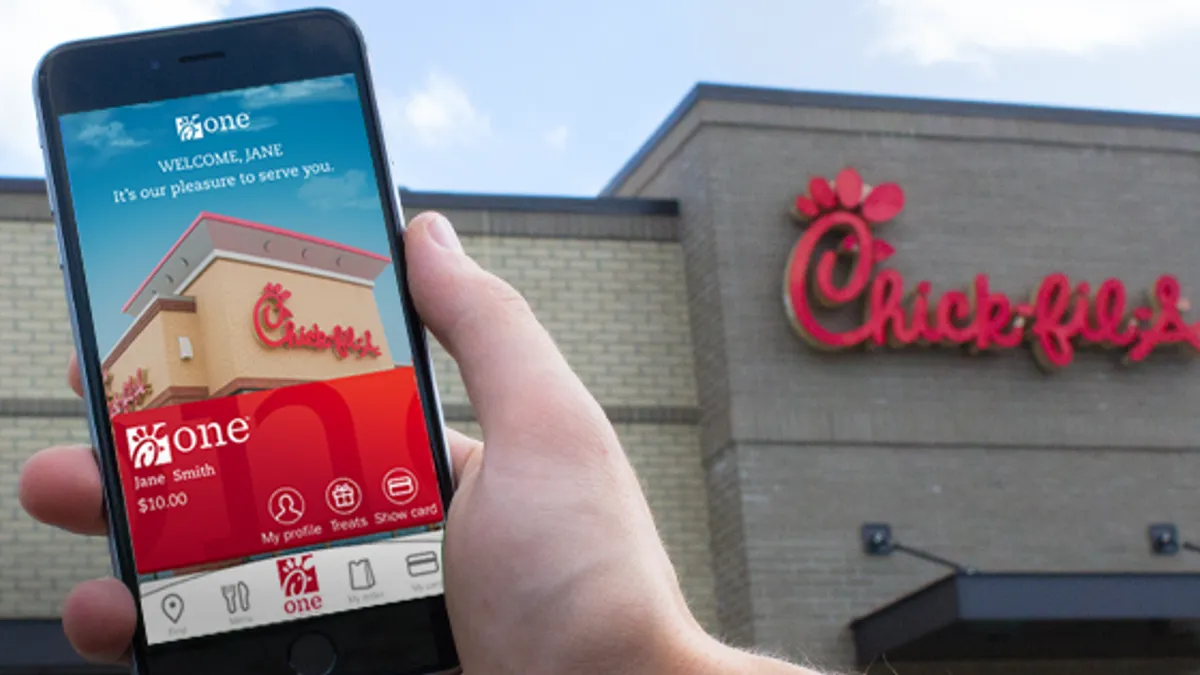Brief:
- Fast food chain Chick-fil-A boosted downloads of its mobile app by 14% by showing a QR code in its digital signage, according to an analysis by the brand's vendor on the campaign, UPshow, that was shared with Mobile Marketer. By scanning the code with their smartphone cameras, customers were pointed to an app store to immediately download Chick-fil-A's app, UPshow said.
- Steakhouse chain Blackrock Bar & Grill, another UPshow client, saw a 27% redemption rate for a scannable mobile coupon shown on restaurant TVs for a pilot program during Mother's Day weekend. The chain boosted revenue and repeat visits by offering a free appetizer coupon that was scanned hundreds of times, per UPshow.
- QR codes have received fresh traction with marketers after smartphone cameras acquired new scanning capabilities that do not need users to download a separate app in order to read a code, according to UPshow. The latest versions of Android and iOS can read QR codes without the need for downloading a separate app.
Insight:
Chick-fil-A and BlackRock Bar & Grill's leveraging of QR codes indicates the tactic is still one consumers are amenable to, and also something that can be applied to achieve a variety of call-to-action responses from mobile users.
Driving app downloads, offering coupons to urge repeat business and seeking customer feedback are among the ways the QR codes can activate two-way communication between a business and its customers. The strategy can provide a way for consumers to respond to advertising, and for marketers to quickly measure the response to marketing campaigns.
QR codes first surged to popularity along with the introduction of better smartphone camera technology, but saw initial interest cool from marketers due to lack of scanning standardization and some of the creative restrictions that come with the format. However, platforms like Snapchat and Pinterest have in recent years introduced their own iterations of the concept, helping to revitalize investments.
For its holiday campaign this year, Pepsi embedded QR codes in its packaging that, when scanned, bring users into a digital scratch-off game, with cash rewards paid forward as gifts to friends and family. Over the summer, the soft drink maker ran a similar campaign that was specifically designed for Instagram.
Marketers are also putting a bigger focus on tying QR codes to other channels. UPshow, for example, focused on linking QR scans to digital signage from brands. NBCUniversal recently introduced Shoppable TV commercials that include scannable QR codes that let users go directly to an e-commerce site to buy the products advertised.
The number of QR code coupons that will be redeemed by a mobile device will more than triple to 5.3 billion by 2022 from an estimated 1.3 billion in 2017, according to a forecast by Juniper Research. The firm estimated that 1 billion mobile devices will access coupons through QR codes by 2022.
Some of the functionality of QR codes has been replaced by near-field communications (NFC) chips that let devices communicate by radio waves when they're within four inches of each other. Payments services like Apple Pay have relied on NFC chips for years, and the technology is being expanded to handle other functions. Kraft Heinz this year included NFC-activated packaging for Kraft Singles cheese sold at Walmart that let shoppers download a coupon for a later purchase, see recipe suggestions and enter a contest.













